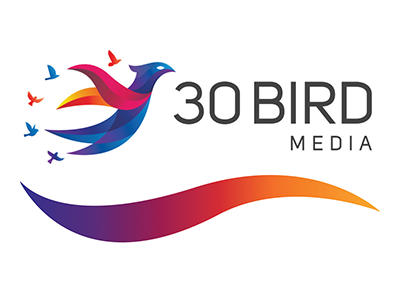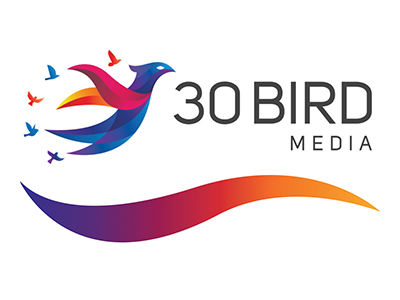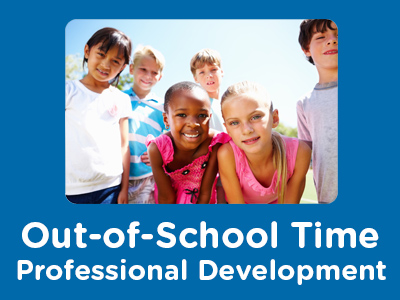 |
Sales Skills: Advanced: Developing a Winning Strategy |
0.50 |
This course will focus on examining consulting strategies and developing solutions for clients. |
 |
Moderate to Vigorous Physical Activity (MVPA) (CDA 2) |
2.00 |
This course tackles the sobering reality that 25% of children lack enough moderate-to-vigorous physical activity (MVPA) in their daily lives. It explores the crucial role MVPA plays in fostering healthy habits, happiness, and overall well-being. Discover evidence-based strategies to ignite movement in children, empowering them to develop strength, maintain a healthy weight, and cultivate lifelong vitality. |
 |
Mental Health First Aid in the Classroom |
1.00 |
A student shouts in rage, “I wish I were dead!” Is he expressing suicidal ideation? A student quickly covers cut marks over her left forearm. Should we approach her or respect her privacy?
The National Alliance on Mental Illness data show that one in five adolescents between the ages of 13 and 18 will experience a severe mental illness, and only 20 percent will receive treatment. We know, then, that our students are coming to us with mental health needs that are greater than ever before. This can feel overwhelming, especially when we want to help our students achieve to their fullest potential and are not sure how to.
The good news is that basic mental health first aid can offer practical, valuable tools. We don’t need to be a cardiac surgeon to perform CPR, and sometimes CPR can save a life. Similarly, we don’t have to be a licensed mental health professional to provide basic mental health first aid in the classroom.
|
 |
Becoming Tech Savvy |
1.50 |
This course was designed to help you learn various tips and tricks to use your devices as efficiently as possible. This includes tech skills, safety & security information, and keyboard and mouse shortcuts. |
 |
Advanced Interpersonal Communication: Communication Styles and Methods (Instructor Guide) |
0.75 |
To be successful in the workplace, you must be able to effectively communicate and cooperate with clients and co-workers. Learning about the four types of communication styles helps a listener understand a speaker’s perspective. It also helps a speaker understand how their communication affects the listener.
In this course you will learn: to identify primary and secondary communication styles, and to communicate using various verbal and nonverbal modes of communication.
This Instructor's Edition of this course includes notes and suggestions to assist you in presenting the material, whether in an in-person classroom setting or as an instructor-led online or distance-learning course. It also provides you with the answers to questions found in mid-lesson activities, as well as in the quiz that concludes the course. |
 |
Commotio Cordis |
1.00 |
Paramedic Instructor Peter Bonadonna discusses his thoughts on Commotio Cordis in an effort to orient EMTs that are not familiar with the phenomena. |
 |
Business Accounting: Stockholders' Equity |
1.50 |
This course will cover how to identify various types of stocks and calculate the value of a corporation’s stock as well as how to use financial ratios to calculate book value and market value per share. You will also learn how to identify the components of stockholders’ equity and report stockholders’ equity on financial statements. |
 |
Beginning a New Career |
0.50 |
In this course, you’ll learn some tips to determine what career is right for you, what to consider before changing careers, how to evaluate yourself as you consider a career, and more. |
 |
African Penguins |
1.00 |
This course presents historical and current threats to this endangered species, along with what is being done to help save them. Dive into their wet and wild world and discover details of how these birds behave. |
 |
Exploring Four Areas of School-Age Development |
2.00 |
One of the most helpful ways to gain an understanding of the needs and interests of youth between 5 and 12 is to examine their development from four different perspectives: 1) Physical Development, 2) Cognitive Development, 3) Social Development, and 4) Emotional Development. It is important for staff to keep all four of these areas in mind when planning and implementing program activities and experiences. Keeping the four areas of development in mind leads staff to design a balanced set of experiences that nurture and growth and development of the “whole child.” |
 |
Human Relations Skill Development: Communication and Team Building for Paraprofessionals |
1.00 |
Being able to communicate effectively is an essential human relations skill for paraprofessionals. To be a good communicator, paraprofessionals need to understand the components of communication, and how the communication process works. They need to identify barriers to clear communication and develop strategies for minimizing or eliminating barriers to communication. Assessing the current status of personal human relations skills helps each professional identify priorities for making improvements to these skills. |
 |
Microsoft PowerPoint - Basic: Getting Started |
0.75 |
This course will focus on how to open a presentation, identify PowerPoint interface components, switch between views, and zoom in and out. |
 |
Advanced Interpersonal Communication: Colleagues and Subordinates (Instructor Guide) |
0.50 |
Colleagues might include people in your office, team, department, or division. They do not hold a supervisory position over you, nor do you hold a supervisory position over them. Instead, you are all in a similar place on the corporate ladder. Learning how to communicate effectively with your colleagues helps maintain a friendly and effective workplace, and enables you to better promote your ideas and respond to those of others.
In this course you will learn: to identify the guidelines for communicating with colleagues, and how to take appropriate steps to apologize to subordinates; use appropriate tactics to refuse a subordinate’s request; and dismiss a subordinate.
This Instructor's Edition of this course includes notes and suggestions to assist you in presenting the material, whether in an in-person classroom setting or as an instructor-led online or distance-learning course. It also provides you with the answers to questions found in mid-lesson activities, as well as in the quiz that concludes the course. |
 |
Ground Cover Fires |
1.50 |
This course is an introductory level course that introduces the basic concepts of fighting fires that involve natural ground cover. This course describes fire behaviors associated with ground cover fires, identifies the types of equipment as well as methods used to combat these fires. The lesson also identifies specific hazards associated with ground cover fires and describes methods for mitigating the risk of those hazards. |
 |
12-Step Recovery Programs |
1.50 |
This course covers the history and philosophy behind 12-step recovery programs. |
 |
Basic Health & Safety Requirements for Certification |
6.00 |
Best practices and standards for health and safety are the foundation of quality child care. Meeting the basic health and safety needs of all children sets the stage for positive child outcomes.
This health and safety orientation module provides an overview of the basic health and safety requirements and best practices in nine of the topic areas outlined in the Child Care and Development Block Grant (CCDBG) Reauthorization of 2015. The topics are as follows:
Safe spaces; Transportation safety; Handling and storage of hazardous materials; Emergency preparedness; Prevention and control of infectious disease; Food and allergic reactions and how to respond; Administration of medication; Shaken baby syndrome/abusive head trauma; Safe sleep and SUIDS prevention.
This course is designed to meet your professional development needs. It can be taken as a stand-alone learning event, or as part of a broader early childhood education curriculum. In addition to state child care regulations, there may be other health and safety measures required by your municipality, township, or county. Check with county or local offices for information on local health and safety requirements. |
 |
Conflict and Communication: Why Can't We Be Friends? |
1.00 |
Conflict occurs when we are in relationship with others. In fact, the hallmark of a healthy relationship is not the absence of conflict, but the ability to successfully resolve it. Unfortunately, resolving conflict is not a skill many of us were taught. We'll explore the fundamental causes of conflict and the dynamics that can escalate conflict. Finally, we’ll cover the tools necessary to navigate conflict successfully, including effective communication strategies. |
 |
GED: Social Studies - Unit 5: Post-Test |
0.25 |
Welcome to Unit 5: Post-Test. This post-test covers civics and government, US history, economics, and world geography. At the end of this post-test is a table that matches each test question to the content it covers. Use it to review and content you haven't mastered. |
 |
Microsoft Project 2021/365 Complete |
16.00 |
30 Bird Media's Microsoft Project 2021/365 Complete courseware covers the concepts and skills needed for maximum productivity in Project, starting with fundamentals and working up to advanced tools and techniques.
There are no specific prerequisites for this course. However, general computer user knowledge is assumed. Any additional experience having worked with forms and/or databases will be helpful.
You will benefit most from this course if you have at least some prior knowledge of project management procedures and practices. It is intended to support you in applying this knowledge through the use of Microsoft Project as a project management tool. |
 |
Searching Online |
0.75 |
This course covers the fundamentals of searching online. From using basic features, such as the homepage and address bar, to using "advanced search" to find very specific information, this course will cover it all. |
 |
Customer Service: Using What You've Learned (Corrections) |
0.25 |
This course will provide you with the information and—we hope—the inspiration to improve your customer service skills and work toward personal success. The final two steps are up to you: You must implement what you have learned, and continue to work on improving your skills. |
 |
Food Allergy Basics in Early Childhood (CDA 1 and 5) |
3.00 |
Welcome to Food Allergy Basics in Early Childhood. This course is focused on ways to prevent accidental exposure to foods that can cause an allergic reaction. You will be able to describe ways to prevent accidental exposure to foods that cause an allergic reaction. You will also be able to demonstrate how to read a food label to reduce the risk of accidental exposure to foods that can cause an allergic reaction. In addition, you will learn how to use a Food Allergy and Anaphylaxis Emergency Care Plan to care for a child with a food allergy and identify the symptoms and triggers of food allergies. This course is also designed to be part of a Child Development Associate (CDA) Credential™ curriculum. It covers Subject Area 1: Planning a Safe, Healthy Environment to Invite Learning and Subject Area 5: Managing an Effective Program Operation. |
 |
CompTIA A+ Certification Comprehensive - Exams 220-1101/220-1102 |
40.00 |
CompTIA A+ Certification Comprehensive - Exams 220-1101/220-1102 provides the basic knowledge needed to install, configure, and support computer software and implement networking. This includes:
- Applying basic methodical troubleshooting skills as an IT technician
- Identifying motherboard and CPU components, installing or replacing them, and troubleshooting their functions
- Identifying power supply functions and connectors, installing them into a PC, and troubleshooting power issues
- Configuring BIOS/UEFI firmware, identifying and installing RAM, and troubleshooting memory issues
- Comparing internal and external expansion buses on a computer, installing internal cards, and identifying expansion cables and connectors
- Distinguishing between physical storage technologies, installing drives, and troubleshooting storage problems
- Connecting, configuring, and troubleshooting common input-output devices
- Describing common printing technologies, installing and maintaining printers, and troubleshooting printing issues
- Identifying client operating system features, installing Windows and application software, and working with scripts
- Managing and troubleshooting operating systems using built-in administrative tools, such as the Windows Control Panel, Windows Settings, and command-line utilities
- Describing network principles, network devices, and internet connection technologies
- Identifying and categorizing network cables and connectors
- Configuring and troubleshooting issues related to TCP/IP and other network protocols
- Describing common wireless networking standards and encryption methods
- Configuring and troubleshooting problems with Windows resource sharing and network connections
- Identifying and using virtualization technology and cloud computing services
- Identifying types of mobile devices and operating systems, and configuring and troubleshooting mobile devices
- Recognizing common cybersecurity threats and the security controls which are used to reduce risk
- Identifying and using security features built into operating systems, as well as security hardware and software used on workstations and networks
- Securing workstations and mobile devices against security risks, and troubleshooting common security issues such as malware infection
- Applying best practices in IT operations, including policies, documentation, ticketing systems, incident response, and data backups and recovery
This course maps to the CompTIA A+ Certification 220-1101 and 220-1102 certification exams. You can download an objective map for the course from 30bird.com.
This course assumes that you have basic computer knowledge.
For exam practice, use the separate Exam Preps for exams 220-1101 and 220-1102:
- CompTIA A+ Core 1 220-1101 Exam Prep
- CompTIA A+ Core 2 220-1102 Exam Prep |
 |
Cultural Competence for Paraprofessionals |
0.75 |
Culture and cultural elements are essential components of people's identities. Understanding the cultural elements as paraprofessionals allows for a greater appreciation for students and can improve relationships. Cultural elements may include race and ethnicity, gender, and socio-economic status. These elements of culture are not separate from the larger cultural context in which we live and work, especially as paraprofessionals. It is important to recognize that many culturally and linguistically diverse families have specific customs and traditions that may not necessarily be connected to a particular cultural group. By understanding cultural competence, paraprofessionals can provide responsive instruction and support to students from all backgrounds. |
 |
Providing Homework Support: Types of Homework Support |
1.00 |
Research indicates there are many different ways to provide effective homework support in school-age programs. When planning a homework support program, it is important for school-age programs to develop a homework philosophy that is consistent with the program’s overall philosophy, and reflects current research on best practices for providing homework help. The homework philosophy should also reflect the needs of parents and children in the program, and strike a balance between homework needs and other experiences that help children grow and learn out-of-school. In this course, we will explore the various types of homework support. |


























